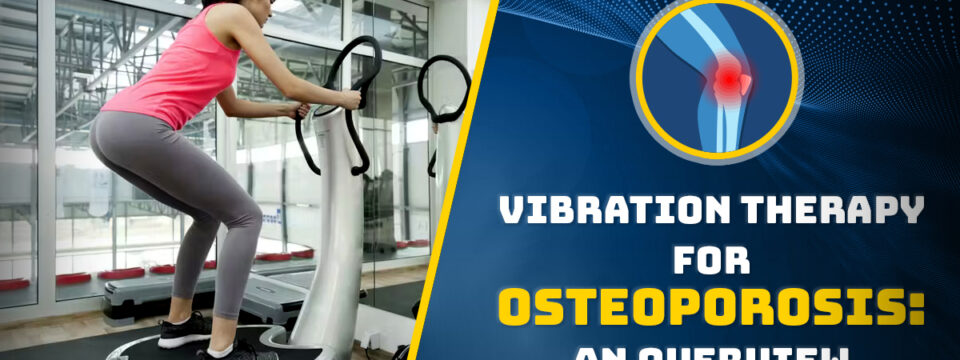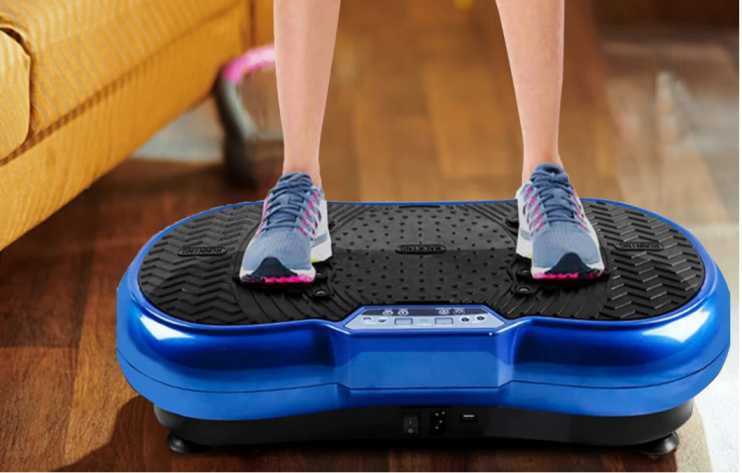As we age, our bones can decrease in bone mineral density and bone mass, and as a result, the bones become fragile. This condition is called osteoporosis, and it affects 53 million adults over 50 in the U.S.
What causes osteoporosis? What are the effects?
As the bones become fragile, they’re more likely to break, especially in the hips, wrists or spine. Conditions such as aging, hormonal deficiency, chronic inflammation, cerebral palsy, lack of physical activity can all contribute to this loss in bone mass.
How can you prevent it? It’s essential to restore the balance between the formation of bone tissue and resorption activities. This can be promoted by physical activity, physiotherapy, and mechanical stimulation of the musculoskeletal system.
Increasingly, many are also turning to vibration therapy.
Vibration therapy for osteoporosis delivers mechanical, repetitive movement through a vibrating platform. The oscillations generate energy, which is then transferred to the body.
As a result, vibration provides many of the same benefits of exercise. However, it’s much gentler and may provide benefits faster than physical exercise.
Interested in how it works and the potential benefits for those with osteoporosis? Keep reading to learn more about vibration therapy for osteoporosis.
Benefits of Vibration Therapy for Osteoporosis
Ultimately, osteoporosis can be caused by several conditions. Some risk factors associated with osteoporosis include:
- Diabetes
- Family history of osteoporosis
- Insufficient exposure to sunlight causes vitamin D deficiency
- Early menopause
- Low testosterone levels among men
- Hyperthyroidism or hypothyroidism
- Lack of physical activity
- Smoking
- Alcohol
So how does vibration help?
Researchers have long studied the effects of non-invasive, non-pharmacological modalities such as whole-body vibration on osteoporosis. According to one study, WBV significantly increased bone mineral density among post-menopausal women. The same study also showed reduced fracture risk in individuals without chronic illness. However, conclusive evidence has not yet been established, and studies have shown mixed results.
The idea, though, is simple.
Vibration therapy mimics physical exercise. It does this on a much smaller scale, as the tiny vibrations activate hard-to-reach muscle groups and provide strengthening to the joints and muscles.
Key Benefits
Vibration therapy does help improve balance, which is a common cause of falls (and the resulting bone breaks). Plus, it may help to promote strength and flexibility.
Here are some key benefits:
- Prevents falls and improves balance among the elderly
- Increases strength and flexibility
- It may promote fat loss
- It helps in relieving muscle soreness
- It may have a positive impact on osteoarthritis
- Lowers cortisol levels
Ultimately, keeping a healthy diet and lifestyle in check from a young age is vital to look after your bones.
Safety Measures: Osteoporosis and Vibration Therapy
Even though vibration therapy has some therapeutic benefits and advantages, its efficacy and safety for osteoporosis are unknown.
More research, studies, and trials are needed to deepen our knowledge and understand the role of vibrating machines in bone density. Until then, here are the safety checkpoints to remember while considering vibration therapy for osteoporosis.
Contraindications
Prolonged exposure to vibration treatment may cause harm to different tissues and organs of the body. Chronic vibrations have been linked to issues such as,
- Raynaud’s Syndrome
- Tinnitus
- Blurred Vision
- Headaches
- Joint Pain
Additionally, vibration therapy for osteoporosis is harmful and contraindicated in:
- Pregnancy
- Retinal detachment
- Fresh surgery
- Recent wounds
- Joint implants
- Pacemaker
- Cochlear implants
- Heart diseases
- History of heart attack or stroke
- Blood clotting disorder
Intensity and Frequency
The intensity and frequency of a vibrating machine for bone density play a vital role. Intensity can be categorized into high and low intensity. High-intensity vibration platforms provide gravitational force greater than 1g, whereas low intensity is less than 1g.
Due to the risk involved, older adults cannot undertake high-intensity or weight-bearing exercises and must rely on medication to supplement bone health. The FDA has not approved a whole-body vibration platform for medical or clinical purposes. None of the FDA standards regulate the manufacture and designs; hence, vibration platforms vary widely.
High-intensity platforms are generally marketed as powered exercise equipment, and low-intensity WBV platforms are used for treating osteoporosis or improving bone mineral density. However, it is often followed by the disclaimer that their devices are investigational and they make no medical claims.
Another study collected preclinical and clinical evidence suggesting low-intensity vibration improves bone quality. The International Safety Organization (ISO) has set a threshold to regulate the vibration for human exposure as a function. According to ISO-2631, low-intensity vibration (LIV) induced at 0.3g at 30 Hz for four to eight hours may be safe and reduce concerns about LIV as a treatment for osteoporosis. Also, the vibration platform’s frequency generally ranges from 12-40 Hz (The natural frequency of the human body is less than 20 Hz).
Since different body parts have their resonant frequency, there needs to be a better understanding of the optimal vibration dosage. Failure to do so may be harmful for individuals with fragile bones. Further research and studies need to focus on treatment protocols to prevent and treat osteoporosis, such as,
- Platform type
- Platform settings (frequency, amplitude, acceleration)
- Session length
- Session frequency
Balance and Stability
Because there are no FDA standards to regulate the manufacture and designs, vibration platforms come in various sizes and shapes.
Some vibrating machines for bone density are rectangular devices that look like a bathroom scale, while others are larger and may resemble typical exercise machines. Irrespective of the shape and size, safety concerns must be considered.
Individuals using vibration therapy for osteoporosis may experience balancing problems or stability issues. Features such as handrails can help avoid the risk of falling or slipping. Manufacturers should also investigate other safety features, considering that the elderly, injured, or infirm are their primary consumers.
Additional Safety Tips
Individuals wanting to experience vibration treatment for osteoporosis must follow device usage instructions. If unclear, performing under a professional’s guidance is recommended if taking sessions in clinical physical therapy, rehabilitation centers, or exercise facilities.
If experiencing any side effects such as decreased blood pressure, dizziness, or any other pain occurs, stop immediately and consult your doctor.
Wrapping Up
Vibration treatment for osteoporosis, when performed with low-intensity vibrations, may help in preventing the deterioration of bone. However, further research and trials are needed to ascertain the benefits of whole-body vibration on osteoporosis. Studies should also focus on whether changing platform settings during a session is optimal.
Vibration therapy for osteoporosis must uncover many evidential data points such as nutritional intake, posture/knee flexion, safety features, potential side effects, platform type, session length, and much more. Weight-bearing exercise, sufficient vitamin D, and a healthy diet can help maintain bone health. Consult your doctor before incorporating vibration therapy for osteoporosis.
Only time and evidence-based research can conclude using vibration treatment for osteoporosis as an adjunctive versus a distinctive therapy.


1 thought on “Vibration Therapy for Osteoporosis: Safety Considerations and How It Helps”